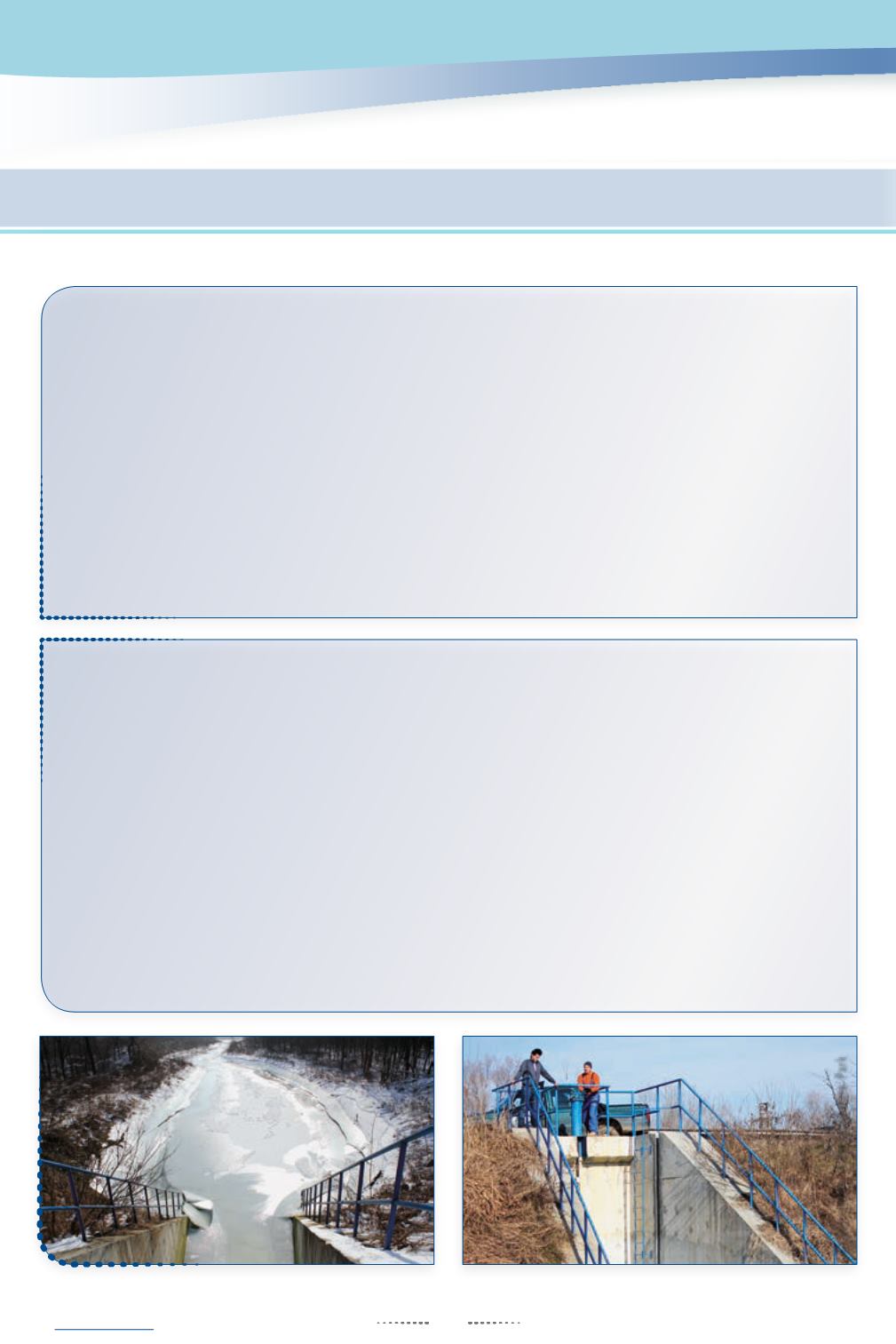
84
O
bjectives
Wetlands are of vital importance to biodiversity and provide essential environmental services such as retention/reduction
of nutrients and reduced pollution of water and sediments, as well as groundwater recharge.Wetland restoration has two
main targets: improving
natural assimilation
(purification) of effluents through dilution, dispersion, and physico-chemical
processes, and conserving
biodiversityand thegene-pool
in riparian areas. More specifically, this project aims to ‘create a
model for reducing trans-boundary nutrient loads in the Danube and Black Sea basins and to preserve biodiversity in the
protected sites through: restoration of wetlands, management plans for protected sites and support to the local people in
adopting
environmentally friendlyeconomicactivities
’. Therefore, it addresses
WFD
requirements: mitigation of nutrient
pollution and morphological alterations to achieve good ecological status, restoring a Heavily Modified Water Body (Lower
Danube) and achieving objectives for protected areas (Natura 2000). It also addresses the
Birds andHabitats
Directives.
Regarding national policies, the project responds to the River Basin Management Plan (RBMP) of the Danube River District,
the NationalWetlands Conservation Plan of Bulgaria and the National Biodiversity Strategy. Persina Nature Park and Kalimok/
Brushlen Protected Site were selected as project sites due to the high value of their biodiversity, the wetland capacity to
extract biogenic pollutants and their role for flood prevention.
T
hemeasures
implemented
The project was carried out in the period 2002-2008, with wetland restoration works commencing in 2007. It consisted of
constructing
engineering facilities
, including sluices, channels and dykes to protect the adjacent land, as well as access
roads. The purpose of the new facilities was to enable water to flow into former wetlands, and provide options for controlled
flooding, optimised trapping of nutrient elements, and restoration of biodiversity and fish populations. Today, the retention
capacity of the two sites corresponds to
40 to 60 days of flooding annually
. The technical design of the project in the
Persina site includes three inflow sluices (2 and 1.5m) corresponding to a maximum runoff capacity of 17.3m
3
/s, and one
outlet facility (double sluice with dimensions of 2 per 2/1.5m) with a maximum capacity of 34.6m
3
/s. The technical design
for Kalimok-Brushlen includes one inflow sluice (2 per 1.5/1m) with a maximum capacity of 18.6m
3
/s, one inflow sluice
(2/1.5m) with a capacity of 20.5m
3
/s, and one outlet facility (2 per 2/1.5m) with a capacity of 37.3m
3
/s.
The
design
of the infrastructure facilities was developed dependent mainly on the topography of the island (for Persina) and
of the riparian bank and floodplain zone (for Kalimok-Brushlen). Other key factors were the shape and depth profiles of the
former wetlands, design of the old dykes, hydraulic parameters of Danube River (flow, water level and seasonal fluctuations)
and the desired water regime for the wetland biodiversity. The project design followed the objectives related to biodiversity
conservation and the principle of conformity with the management objectives of the protected sites. It also relied on National
standards and protocols, Environmental Assessment and EUWFD guidelines.
© Directorate of Persina Nature Park
Inflow sluice and channel connecting the wetlands with Danube River
Inflow sluice on the protection dyke of Persin Island
© Directorate of Persina Nature Park


